Driving in any foreign country can be stressful, and Mexico is no exception. We’ve spent several years living in Mexico, and we’ve learned a lot in our travels to almost every state in the country. In many ways, Mexico is like a second home country to us and we are more comfortable than ever driving in Mexico.
With that being said, we’ve had our fair share of rough experiences. From a few run-ins with corrupt police to poor road conditions and car trouble, we’ve had to learn and adapt on several occasions. This post offers up all of our pro-tips for driving in Mexico, as Americans who bought a Mexican car and drove all throughout the country.
Why Should You Drive in Mexico?
Lined with white-sand beaches, filled with snow-capped volcanoes and mountains, and inhabited by people with a welcoming and vibrant culture, Mexico is a country on most peoples’ bucket lists, and with good reason. After visiting Mexico many times and living and studying in one of its biggest cities for years, we have experienced first-hand just how incredible Mexico really is.
We found that the best way to explore the natural beauty of Mexico is absolutely by car.
While many visitors flock directly to world-renowned places like Tulum, Puerto Vallarta, and Los Cabos, it is definitely worth making a few stops in lesser-traveled places to get a feel for the rest of what Mexico has to offer. Driving a car in a different country can be intimidating, but sometimes it is the best way to experience your destination.
In Mexico, we found that the best way to explore is absolutely by car. Mexico City has a wonderful public transportation system, but this is definitely an exception. Most of Mexico’s small towns, including almost all of its Pueblos Magicos, are only accessible by car or bus.
Can You Drive in Mexico with an American Driver’s License?
As long as you are a tourist, you can drive in Mexico with an American driver’s license. However, if you overstay your tourist visa, or you become a permanent resident of Mexico, your U.S. driver’s license will not suffice.
If you are just visiting Mexico, there is no need to get a Mexican driver’s license or an international driver’s license. Any police officer who says otherwise is looking for a bribe, and you should kindly insist on going to the police station to sort it out.
1. Be Confident When Driving in Mexico
The first thing you’ll notice when you drive in Mexico is that it requires a certain level of aggression. In the United States, aggressive driving is generally frowned upon outside of big cities, but in Mexico it is the expectation. Being a defensive driver may actually put you at risk.
In many places, even in major cities, there aren’t lines on the road. When you encounter a road like this, it is best to pick a side and keep an eye out for cars looking to pass you.
They may honk at you, but don’t let this alarm you! Unlike in the United States, a honk in Mexico is usually a friendly sign letting you know someone is about to pass you.
A honk in Mexico is usually a friendly sign letting you know someone is about to pass you.
2. Keep an Eye out for One-Way Streets
In many towns and cities in Mexico, there is no such thing as a two-lane road. In fact, almost every Mexican road you’ll find (except for highways, which usually have a median) only allows traffic in one direction. This can get tricky, as there usually aren’t “one-way” signs like in the United States.
To a Mexican person, these signs would be redundant, as they already expect that every road is a one-way street. In a city or town, much like in the United States, the direction typically alternates after each block.
If you’re ever in doubt and there are no oncoming cars to alleviate your confusion, look about 8 feet up on the wall of whatever building is on the corner. There will often be a subtle arrow pointing in the direction of the flow of traffic!
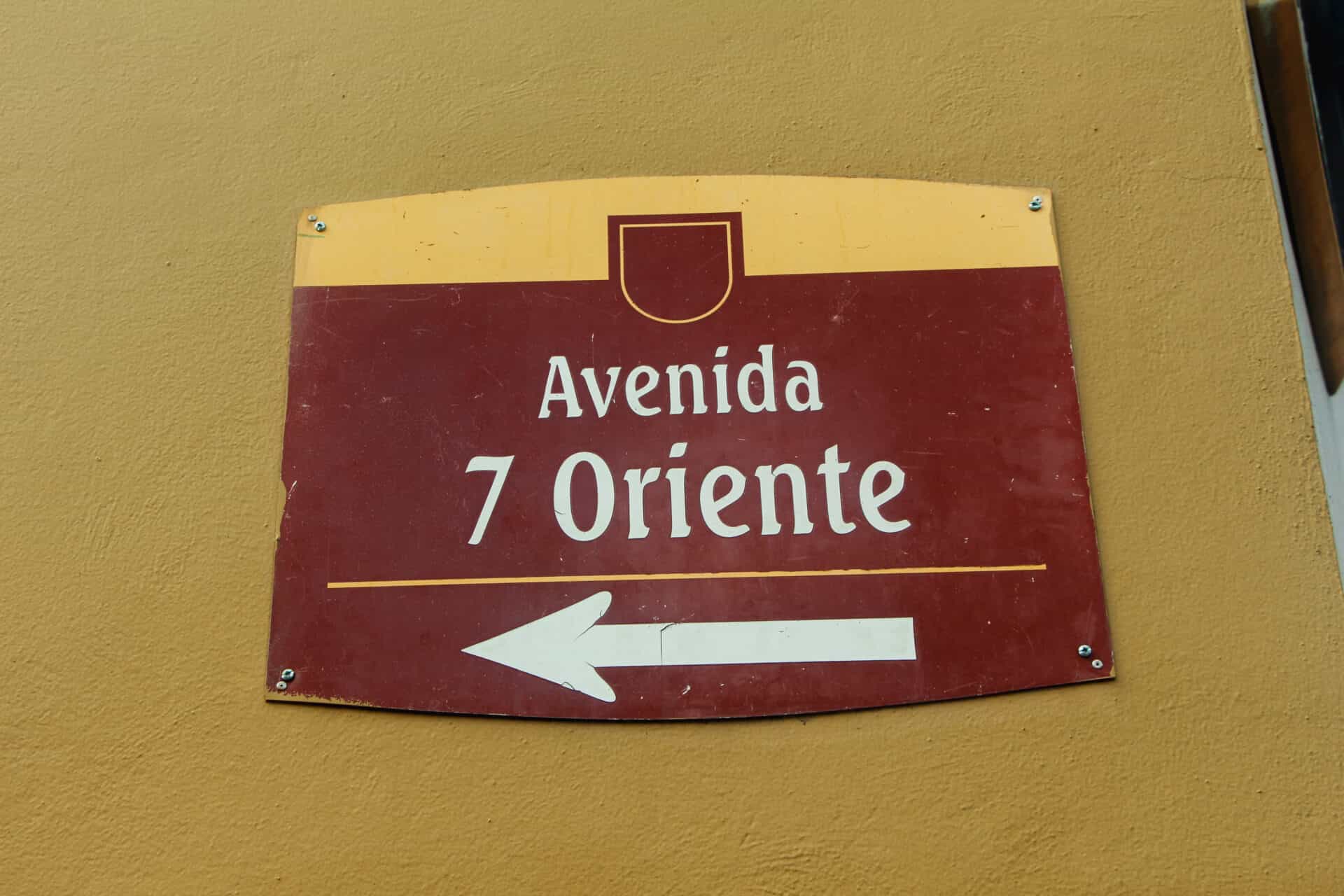
Look for the tiny arrow on the street sign to know the direction of traffic
3. Obey the Tricky Traffic Lights
This one may sound obvious, but in Mexico there is a slight twist in the rule, and breaking it may result in a not-so-fun encounter with the police. While traffic lights in the United States follow the “red lights mean stop, yellow means caution, green means go” mentality, Mexico adds a blinking green light into the mix.
Its meaning is similar to the U.S. meaning of a yellow light, in that you may cross through the intersection if you don’t need to accelerate. A yellow light in Mexico, however, is not much different than a red light, and if you cross through an intersection on a yellow light there is a chance you will be pulled over.
Also, turning either direction during a red light is generally frowned upon in Mexico.
4. Beware of Unmarked Potholes and Speed Bumps
The roads in Mexico receive mixed reviews from drivers, and it largely depends on which roads they’re talking about. On the nicer end, Mexico has a good number of well-maintained toll roads that rival those north of the border.
On these, be sure to have cash, as the toll booths do not accept credit cards. While the tolls are often a bit hefty by Mexican standards, the roads are well worth the price of admission. They are generally very well-maintained and safe, and there are convenience stores and gas stations every few kilometers.
If you’re traveling on a toll road be sure to have cash, as they do not accept credit card.
On the lower end, some Mexican roads look like the surface of the moon. There are massive potholes and one-foot-tall speed bumps everywhere, and extreme levels of caution are required. Many of these speed bumps are marked with yellow paint, but a large portion of them are not.
In a pothole infested stretch of road, it is best to slow down and feel free to use the whole road to navigate the minefield ahead of you. When it comes to the speed bumps, all we can say is good luck! Often, you won’t realize there’s a speed bump on the road until it is beneath your axles while you’re moving at 30 miles per hour.
5. Turn Signals Are for More than Turning
Whoever designed the turn signal probably had a straightforward vision in mind: to create a tool that lets other drivers know when you’re turning or switching lanes. This straightforward idea, like many things in Mexico, can become very overcomplicated.
It is recommended that you use your turn signal when you’re going to turn, but you should not use it when you’re going to pass another car. In Mexico, the turn signal is a sign letting other cars know that they can pass YOU on the indicated side.
Let me repeat that.
In Mexico, the turn signal is a sign letting other cars know that they can pass YOU on the indicated side.
On Mexican highways you may see large trucks with their left turn signal on – with all necessary caution, of course, this is your invitation to pass them on the left. However, the same applies to you. If you use your left turn signal to switch lanes, especially on a tight city road with no lane-lines, you may be placing yourself in unnecessary danger.
If your instincts tell you to use it in these cases, more often than not you’ll probably be fine. But if you can remember, try to limit its use to just making turns.
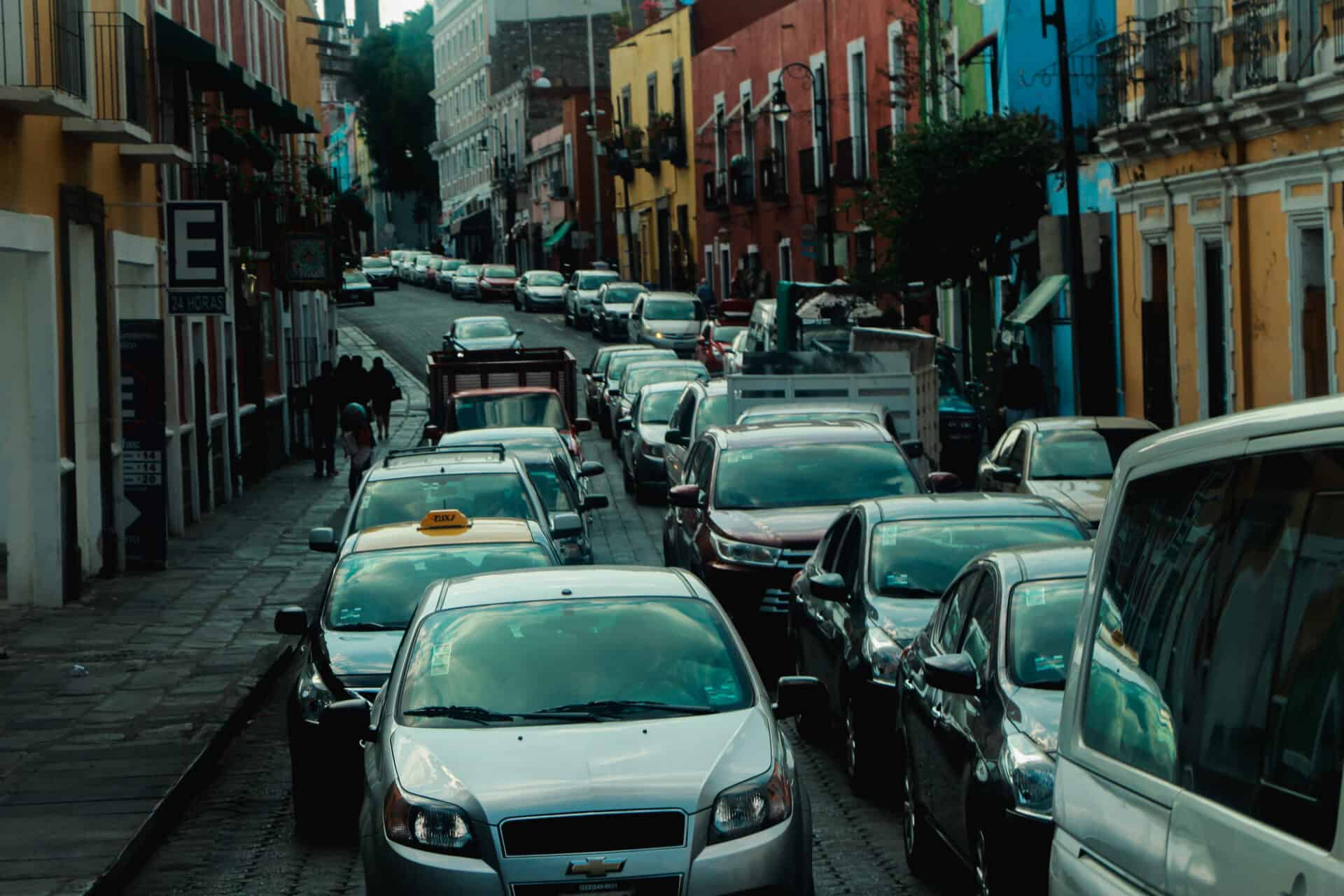
6. Be Prepared to Deal With Corrupt Police
American news outlets love to talk about how dangerous and unstable Mexico is. They especially like to talk about the corrupt police epidemic. While there is some truth to this, the problem is very often over-exaggerated.
There are corrupt police officers in Mexico. This is a fact, and we’ve personally experienced this. However, the majority of police officers are honest people making an honest living.
On top of that, most corrupt police officers have no violent intentions. They just want to make an extra buck and will harass you until you pay up. While this isn’t fun, it certainly is better than the common narrative out there that you’ll be arrested and beaten up until you pay.
Yes, this has happened. But this is not a normal occurrence, and you shouldn’t expect this to happen to you. Especially if you obey all of the laws!
7. Make Sure You Buy Mexican Car Insurance
Fun fact: car insurance isn’t mandatory in Mexico! While it’s illegal to drive in the United States without car insurance, this is not the case in Mexico. In fact, a striking number of Mexican drivers do not have car insurance!
Just because they don’t have insurance doesn’t mean that you shouldn’t. You should absolutely make sure that you have car insurance coverage while driving in Mexico.
“Oh, but my car insurance at home will cover me, right?” Wrong! Most American car insurance companies exclude all driving in Mexico, even if you’re driving your own car.
If you are driving your own car in Mexico, you have two options. You can either contact your current insurer and ask them to add coverage for driving in Mexico, or you can buy a policy from a Mexican insurance company before you arrive. Car insurance is pretty cheap in Mexico, so the latter is often the better option.
If you’re driving a rental car, you should absolutely pay for the liability insurance coverage that they offer. The criminal justice system works differently in Mexico, and in the case of an accident, you can be detained in prison until all damages are paid for if you don’t have insurance.

8. Always Obey the Speed Limit
Per my comment on corrupt police, you never want to break a driving law. While this is the case in any country, it’s especially true in Mexico. Corrupt police officers look for any opportunity to legitimately pull you over so that they can coerce a bribe out of you.
If you always adhere to the traffic laws, there’s a much lower chance of having a run-in with the police. While a bad cop can always pull you over even if you obey the laws, breaking them increases the probability significantly.
9. Prepare the Right Documents if Driving Across the Mexican Border
Driving across the Mexico border is pretty straightforward as an American or a Canadian. Mexico allows you to drive your own car into the country as long as you have your documents in order.
The first of these is your passport and applicable visa documentation. If you are just a tourist, you can enter Mexico with just your passport and pick up your physical visa form at the border. There is no need to apply ahead of time.
If you are a resident or a student, you will need to show your residency card or visa sticker in addition to your passport. The second thing you will need when driving into Mexico is your Temporary Import Permit (TIP). This document is what allows you to drive your foreign-plated car while in Mexico.
The process is straightforward as long as you have the right documentation, including your license, registration, and passport. The permit is good for six months and must be renewed in person with your vehicle at any border crossing.

10. Read Up About the Hoy No Circula Law in Mexico City
Mexico City is one of the biggest cities on Earth. Its massive population has created a lot of pollution and traffic in the area. The local government created a policy that limits which vehicles are allowed to drive in city limits on certain days.
This policy only applies to cars with plates from states other than Mexico City. Most cars are allowed to drive on a couple of days per week, and sometimes there are certain hours within the day that are off limits. The fine is pretty steep if you’re caught driving on one of your off days, and believe me, the Mexico City police will always catch you.
if you’re driving in any other city in the country, this rule doesn’t apply. It only applies to the capital, which much like Washington DC is a large city and administrative district very similar to a state.
11. Know That a Gas Station Attendant Will Pump Your Gasoline
In the United States and Canada, most people pump their own gas. The biggest exception to this is the whole state of New Jersey. In Mexico, all gas stations are manned by gas station attendants!
While this is a small difference, it is a nice thing to know. When you pull into a gas station, an attendant will walk up to the window and ask for cash or a credit card. Let them know how much gas you want, (say llena, or “yee-nah” to fill it up!), and be sure to give them a tip of a few pesos to thank them for their service.
You aren’t allowed to pump the gas yourself, so don’t try. Just stay in your car and relax!
12. Don’t Be Afraid to Call the Green Angels
The Green Angels are a service available in Mexico that is similar to AAA, except that they don’t require a membership. They drive around in green pickup trucks on main highways and help drivers who are experiencing mechanical problems. If you have a flat tire, these guys will be your best friends!
This is a bilingual service that is subsidized by the federal government. They exist explicitly to help you while driving on paid federal highways.
The service is completely free unless you need parts. In this case, you just pay the cost of the parts. Tipping is recommended and appreciated, as this is a great resource to have as a driver in Mexico!
To signal the Green Angels, you can either pull over and prop your hood up or call 1-800-987-8224. They will head to you and help you out, whether you need a flat tire to be fixed, your car to be towed, or some minor first aid to be administered.
13. Choose the Toll Roads Rather Than the Free Roads
There are two main road systems in Mexico: the free ones (libres) and the toll roads (cuotas). When you have the choice, you should always choose the toll roads. While paying a toll adds to the costs of your trip, the road conditions and amenities are very worth the money.
The toll roads in Mexico are nicely paved and maintained, and many of them are of comparable quality to major turnpikes in the United States. These are roads where you can comfortably drive at highway speeds with no concerns. These main roads are frequently dotted with gas stations, convenience stores, and fast food restaurants, too.
Tolls can be paid in cash as a tourist. Mexico does have its own toll tag system similar to EZPass, but it’s a bit tricky to set up and is only worth the effort if you actually live in Mexico.
The free roads are drastically lower in quality, and they can be very unsafe for a multitude of reasons. From scammers and peddlers to wandering animals and potholes, the free roads are not fun to drive on. In some areas, they are actually quite dangerous.
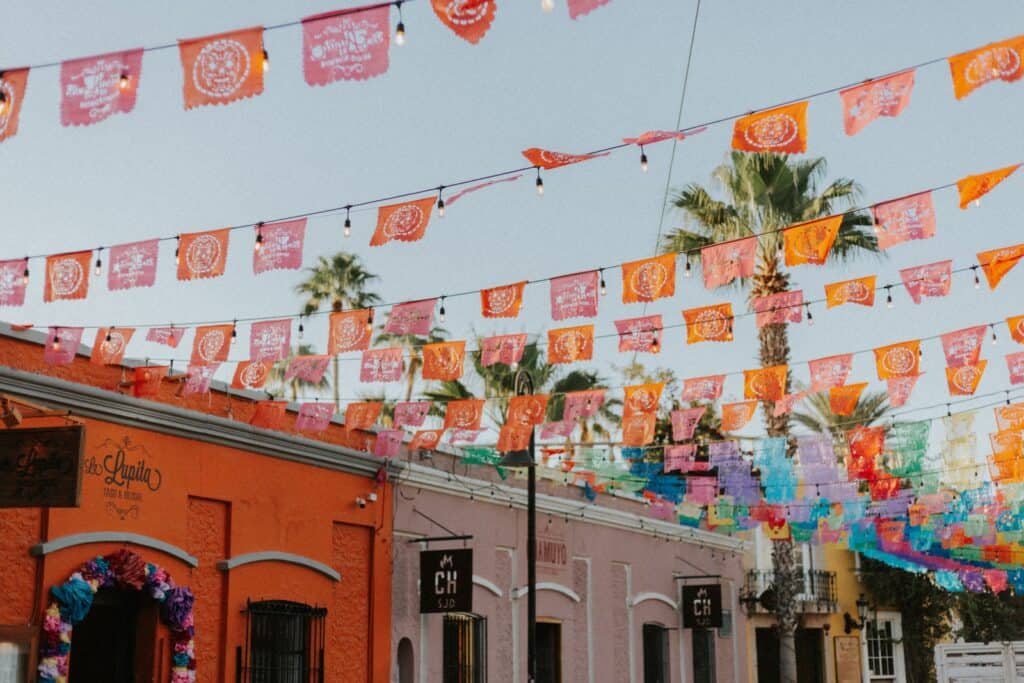
14. Avoid Using Your Cell Phone When Driving
Texting and driving is dangerous anywhere, but it is also illegal in many places in Mexico. Aside from the risks that it poses, it also exposes you to fees, fines, and interactions with police – both honest and corrupt. Avoid all illegal behaviors while driving in Mexico.
15. Google Maps and Apple Maps Both Work Well in Mexico
Google Maps and Apple Maps are two of the most famous map applications in the United States, and the same is true in Mexico. Both work very well and function just like they do in the United States. In addition to getting accurate directions, they also provide very accurate estimates as to how long a particular drive should take.
16. There Are Many Convenience Stores and Gas Stations on Major Highways
There are rest stops all over the paid highways in Mexico, and there are occasional places to stop on the free roads too. With the free roads, the stops tend to be in the small towns that you pass through, while the rest stops on major highways tend to be right along the side of the road with no need to exit.
From fast food to sit-down restaurants, there’s a wide range of what you’ll find. There are plenty of gas stations, too, so that you never run out of fuel.
17. Always Come to a Complete Stop at a Stop Sign
It is commonplace to roll through stop signs in the United States and Canada, but this should be avoided when driving in Mexico. Again, any minor traffic violation exposes you to intervention from corrupt police, especially disobedience of road signs. Coming to a complete stop is easy and it should be common sense.
18. Make Sure You Have a Valid Driver’s License On Hand
Mexico allows tourists from most countries to drive with a valid driver’s license from their home country. However, it does need to be valid! Driving with an expired driver’s license is a crime. Unlike a passport, your driver’s license doesn’t need to be valid for six months into the future. It just has to be valid while you’re driving.
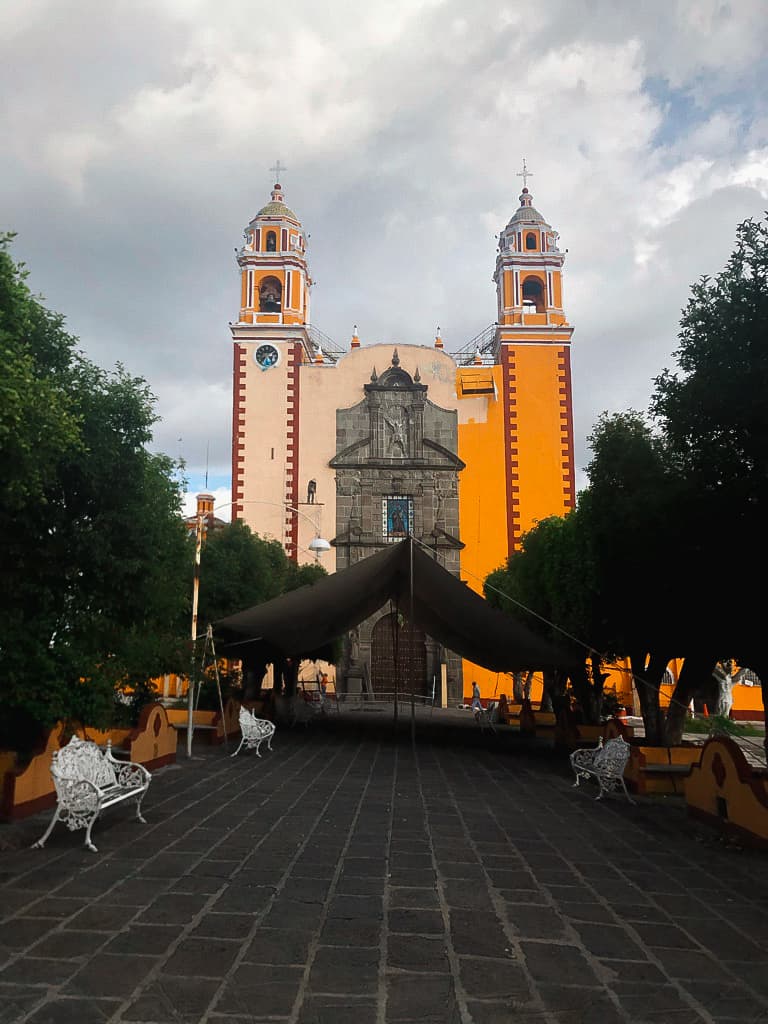
19. Stick to International Car Rental Companies
Mexico has many of the same rental car companies as the United States and Mexico. This includes major companies like Enterprise, Hertz, National, Sixt, and Alamo. If you decide to rent a car in Mexico, I recommend sticking to one of these major companies.
There are also smaller, local rental car companies, but I recommend staying away from them. The major companies are always a safe bet, they offer great prices, and reservations can be smoothly made online. Smaller companies might not be corrupt or shady, but there’s always a chance.
20. Stay on the Right Side of the Road Unless Passing Another Car
In Mexico, the left lane is not the fast lane. It is the passing lane. It’s a good idea to stay to the right on a two-lane highway, because it helps you to blend in with local drivers.
Additionally, while many toll highways have a median, many secondary roads do not. This means that the left lane is at a much higher risk of coming in contact with oncoming traffic, which is another great reason to stick to the right.
21. Don’t Be Alarmed by Military Checkpoints
In the United States and Canada, seeing armed military in the streets is rare. In many other countries, it is incredibly common. Mexico is one of these countries.
It is for your own safety, and this should not alarm you. Whether at the airport, in city streets, or at a checkpoint on the highway, the military is there for safety and protection. The military is seen as very honest and not corrupt, and they should be trusted.
22. Consider Avoiding Driving During Rush Hour in Large Cities
Mexican drivers in most cities are a bit more aggressive than American and Canadian drivers. Rush hour traffic is bad in any country, but it’s especially rough in places like Mexico City. If you have the flexibility, avoid driving during rush hour in Mexico.
With more cars on the road, you’re more likely to get into an accident. Since so many Mexicans don’t have car insurance, this could leave you with some hefty bills that could otherwise be avoided.
23. Be Prepared to Say No to Scammers
At many red lights and highway toll booths, people may try to sell you trinkets or wash your car. It’s very important that you tell these people no, unless you’re willing to pay up. These things are never free, even if someone hands them to you and walks away.
If someone hands you a snack, a card, a bracelet, or offers to wash your car, the best practice is generally to kindly and firmly say no and ask them to move on.
24. Public Transportation Is Only Better in Mexico City
Mexico City has really robust public transportation, but this is the only major city where this is the case. While most major cities in Mexico do have public transportation, it’s usually pretty limited. If you’re visiting anywhere outside of the capital, having a car can be a great asset.
Otherwise, Uber works very well in Mexico and is incredibly affordable. Uber can also be used to get between major cities that are several hours apart and for a great price.

25. Check for Updates Before Leaving on Any Road Trip
Mexico is generally very stable. However, it does have issues with occasional cartel violence or local issues flaring up. Before leaving on your next trip on the roads in Mexico, check the news to make sure the coast is clear.
It usually is clear and safe, but sometimes there are routes you want to avoid. We encountered a road block in Pachuca one time that was being run by local protestors, and some friends told us about other checkpoints that were managed by local gangs. You don’t want to encounter these headaches when road-tripping through Mexico.
26. Most Parking Lots Require Payment Before You Leave
In Mexico, most parking lots require payment. While many American and Canadian cities allow you to park for free at stores and malls, most parking lots in Mexico require some sort of payment. Even Walmart requires you to pay to park in its parking lot, even if you’re shopping in the store.
27. Never Drink and Drive
This should be obvious. Drinking and driving is dangerous and illegal. However, in Mexico it is very common to drive home from the bar.
In this case, it’s best not to do as the locals do. Never get in a car with someone who has been drinking, and be careful when driving at night or after sporting events. Even if you’re not drinking and driving, many other cars around you may have intoxicated drivers.

28. Street Parking Is Affordable But Tricky to Find
Naturally, this depends on what city you’re in. In Cholula, we never had issues finding parking. In Tijuana, it was a much different story. Street parking is very affordable most places in Mexico, but it can be hard to find.
Many streets in Mexico are lined by outward-facing garages. As you might expect, you can’t park in front of someone’s driveway or garage. Keep an eye out for the red and white signs with an “E” on them, as they mark where you can park. “E” stands for “estacionamiento”, which means parking in Spanish.
29. There Are Several Mobile Parking Apps in Mexico
Mobile parking apps are all the rage in North America, and the story is the same in Mexico. Some cities use the same apps you find in the United States, like ParkMobile, and other cities use region-specific apps. Check out the signage around the parking meter to see what your options are, as they come in handy if you don’t have coins or credit cards on hand!
30. Mexico Uses the Metric System
Mexico uses the metric system of measurement. This means that distances are measured in kilometers, and speed limits are posted in kilometers per hour. Most highway speed limits are around 100-110 km/h, which is roughly 60-70 mph.
At the end of the day, this doesn’t really make a difference. Most cars have speedometers that display both miles per hour and kilometers per hour. Just make sure you look at the right numbers, as there are no roads in Mexico that allow you to drive at 100 miles per hour!
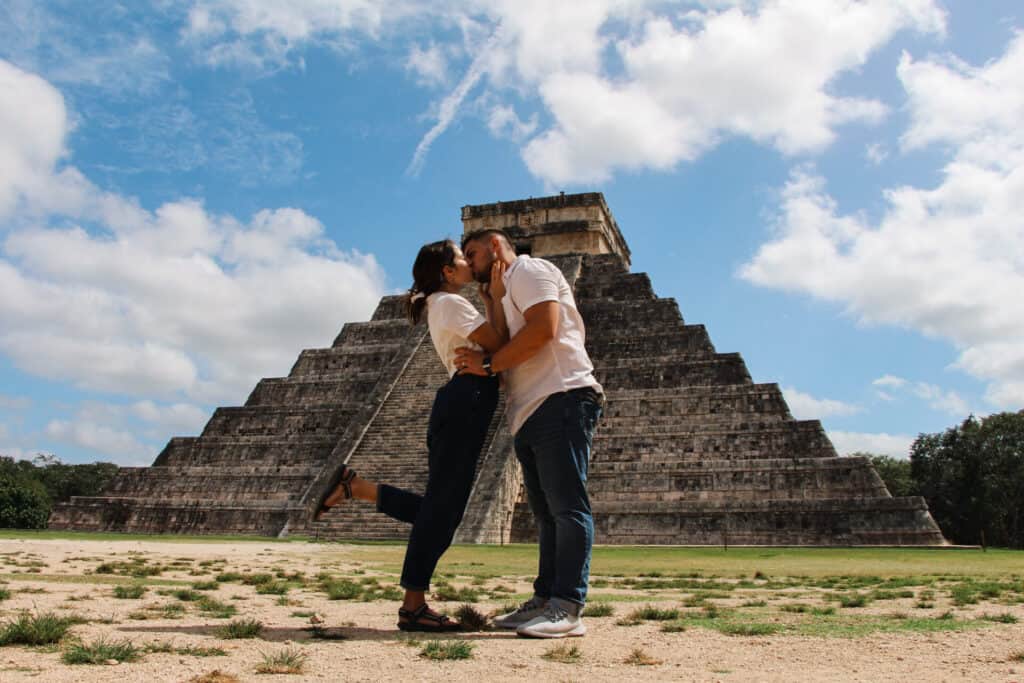
31. All Street Signs Are in Spanish
Another note on signage, be prepared that most street signs are only written in Spanish. Some countries print their signs in multiple languages, but most places in Mexico only print them in Spanish. Popular tourist areas like Tijuana, Cancun, Tulum, and Mexico City may also display English, but the rest of the country doesn’t usually do this. Outside of the Caribbean state of Quintana Roo, you probably won’t see many street signs in English.
32. Avoid Driving at Night
Driving at night is always riskier than driving during the day. This is the case in almost any country. However, in Mexico there are several special reasons why this is the case.
Firstly, the speed bumps are often very frequent and unmarked. At night, it’s very easy to zoom over a speed bump and wreck your car. The same case applies for potholes, which are very abundant in Mexico.
Secondly, drunk driving is much more culturally acceptable in Mexico than it is in the United States and Canada. Naturally, there are more drunk drivers at night than there are during the day.
Finally, the boogie man tends to come out when nobody is around. By that I mean any bad people looking to do bad things (read: cartels, robbers) are more likely to be out and about in the middle of the night than the middle of the day. You don’t want to run into situations like this, and they’re much more common at night.
33. An American License Plate Will Make You a Target
I’ve read contradictory opinions on this, but in my own personal experience, foreign license plates are absolutely targeted in Mexico. If you’re driving your own vehicle in Mexico, and it has an American or Canadian license plate, you’re much more likely to be targeted by criminals and corrupt police officers. This is equally true in major cities and rural areas.
All in all, driving in Mexico is very easy and is quite similar to driving in the U.S. or Europe. There are only minor differences, which we have outlined in this post. Mexico is a beautiful country, and you should let fear of driving keep you from the hidden gems tucked away in Mexico’s more remote areas.
If you decide to drive in Mexico, try to remember these tips in addition to exercising general caution. If you have any questions, feel free to either drop a comment below or send me an email at [email protected].









Charles
Great info! MexInsurance seems like a trustworthy option for Mexico auto insurance. I’ll definitely consider them next time I’m planning a trip.
Greg
Thanks Charles!
Jess Alan Cartwright
Hi Greg You might want to mention that tinted windshields are not allowed in Mexico. This has caused a lot of trips to the police station and heavy fines.
Also, I think you mean to say “Mexico is a beautiful country, and you should not let fear of driving keep you from the hidden gems tucked away in Mexico’s more remote areas.” You omitted the “not.”